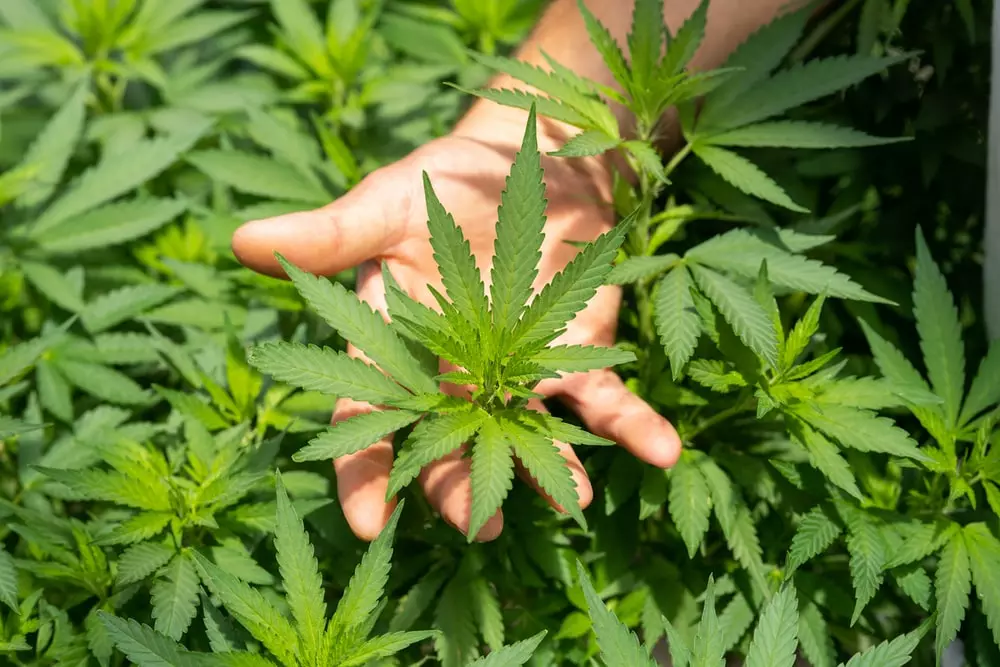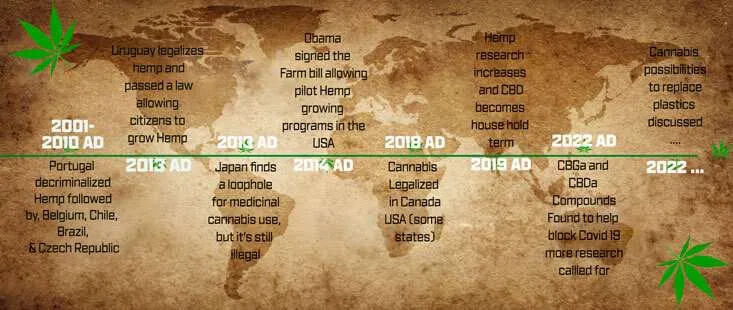Huttons CBD
The History of CBD and Hemp
You wouldn’t be alone in thinking that CBD was a modern phenomenon. Indeed, only in recent years has it resurfaced as a popular therapeutic aid for pain relief, sleep, stress, and many other issues. However, CBD is a naturally occurring substance that has been around for tens of thousands of years. Records show that hemp may have been one of the earliest plants to be cultivated by humanity during the birth of agriculture 10000-12000 years ago.
The Origins of Hemp
From central Asia, hemp cultivation was noted to have begun as early as 2800 BCE, which then went practised in Mediterranean countries around Europe during the early Christian era spreading across the rest of Europe during the Middle Ages! This had gone on to be successfully cultivated in Chile early 1500s while finally making its way to North America over a century later.

More recently, hemp was found to have a much higher CBD content than traditional marijuana. Now, hemp leads the CBD industry with its low THC content making it a good substitute without the effects of being ‘high.’ For this, we can thank the community’s efforts to keep hemp cultivated and improve the overall quality of CBD.
The Discovery of Cannabinoids
Cannabinoids, as we know them, were discovered in 1940 by Robert S. Cahn, that found the fully formed structure of Cannabinol (CBN). This same research is responsible for discovering THC and CBD after successfully isolating CBD separately.
Early research of Cannabinoid Pharmacology
Early pharmacology had a lot of misinformation thrown around due to traditional tests of trial and error would give different results. Traditional methods make it difficult to trial and error with each chemical, hoping to have a trend reaction due to only having a partial understanding.
Almost a year later, it was discovered that the stereochemistry of THC. This revealed the relationship between cannabinoids and euphoric effects and officially disassociated CBD as a mind-altering compound.
The most significant development with CBD was New Mexico passing the 1978 controlled substances therapeutic research act which allowed and was the first recognition of the medicinal values of cannabis. This is an important factor due to how this caused the first-ever application of CBD for a specific medical need. This was being used as a potential treatment of epilepsy as a hypnotic.
The Rise of CBD in the United States
In 1996, California was the first to legalise the medical use of cannabis with Proposition 215. Shortly afterwards, seven other states would follow this trend. This is primarily due to the expansion in studies during this time, which was only passable due to the legalisation in these states.
With legalisation came a wave of information from various studies, with significant research into CBD for treating several ailments, from chronic pain and epilepsy to neurodegenerative diseases such as Parkinson’s and Huntington’s.
With more understanding and removing the stigma around the plant, CBD still struggled to find its footing. This is due to its links with the rest of the plant and misinformation on what CBD is doing. This could be due to not enough of the population at the time having tried CBD. Today we are lucky with access to thousands of other patients with information online about personal use and its recognition in helping with pain-related symptoms and, more recently, its mental benefit side with things such as ADHD, Depression, Anxiety and Autism. Due to THC being removed, CBD has been found to successfully relieve anxiety symptoms, which stands against the common understanding of the plant. THC is responsible for anxious feelings and can cause people to feel overwhelmed.
Sadly, although the scientific community was aware of the positives of CBD, it could have been more well received by the public due to not seeing a difference between the plant’s complex compounds. This is not the public fault; there wasn’t enough information for the public to change its laws on the subject. This meant CBD was illegal to most consumers due to it being in the grey area of laws.
At this time, surveys from 1998-2002 showed that more than 2 out of 3 Americans disagreed with the legalisation of cannabis. The most considerable stigma harming this case was the fear of it being a gateway drug to other, much more dangerous drugs. At this time, the general public deemed it dangerous, addictive and harmful.
CBD in the US Today
Those same people who turned CBD access away are now using CBD for various pain issues and its therapeutic properties. The market for CBD is ever-growing, and just like the market, so are we. Research is at an all-time high within the industry, and the capabilities of CBD are more known, with new applications being brought forward daily.
CBD in the US Today
Those same people who turned CBD access away are now using CBD for various pain issues and its therapeutic properties. The market for CBD is ever-growing, and just like the market, so are we. Research is at an all-time high within the industry, and it’s being more known the capabilities of CBD with new applications being brought forwards daily.
The Future of CBD
We speak of America because of its thriving market and vast research content for CBD. A significant factor for CBD’s future is how it is a plant. Just like us, this plant is ever-changing. This means new CBD-specific flowers are becoming more and more prominent, making the CBD market much more accessible and improving quality with the longer we continue to learn about CBD, the better understanding we have to aid more people with various issues, hopefully. Our current knowledge makes it easy to see why we are excited to see CBD take off!

